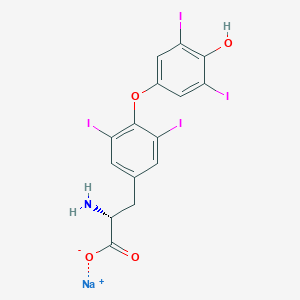Yuan Daojun (left) and Jonathan F.
Yuan Daojun (left) and Jonathan F.
What caused the changes in these phenotypic traits? In the process of artificial domestication and genetic improvement, which cotton genomes are selected or discarded? The scientific community is always looking for answers.
In order to solve this problem, the cotton team of Huazhong Agricultural University cooperated with Iowa State University and the United States Department of Agriculture to carry out research and achieved important results, which not only enriched the genetic information resources of cotton, but also revealed the genetic variation rules and mechanisms of cotton domestication selection.
Deeper sequencing and richer resources
Deeper sequencing and richer resources Cotton is an important source of natural renewable fiber, edible oil and protein.
"Gene bank resources are closely related to agricultural development and food security issues.
Jonathan F.
Various types of cotton in the fields of the Crop Germplasm Resources Research Center of the United States Department of Agriculture.
Various types of cotton in the fields of the Crop Germplasm Resources Research Center of the United States Department of Agriculture.
The research group used the PCR-free method of library construction and used the second-generation sequencing platform Illumina to obtain a total of 42Tb of clean bases.
"This is the world's first extensive collection of representative germplasm resources from the wild to the domesticated continuum, and the first release of such a high multiple of high-quality genomic resources.
Build a phylogenetic tree and establish a domestication path
Build a phylogenetic tree and establish a domestication path The researchers integrated the released cotton deep resequencing data and after all-round screening, 1024 copies of allotetraploid cotton materials were retained for subsequent in-depth analysis.
In order to explore the population structure and diversity of cotton within and between species, they detected 53.
"Artificial selection is to retain what we think is'good', such as focusing only on fiber yield, and some resistance genes are lost as a result, which will lead to a decline in the genetic diversity of cotton.
With these SNPs information, they successfully constructed a phylogenetic tree of allotetraploid cotton species, and quantified the genetic diversity of seven allotetraploid cotton species and the degree of population differentiation among species.
Through a comprehensive analysis of the principal components, population structure and phylogenetic tree, the research team established the subgroup classification of upland cotton and sea island cotton, thus fully sketching the origin, domestication and genetic improvement of the two cotton species.
"Both cotton species originated in fairly narrow native habitats.
" Jonathan F.
Wendel said.
Upland cotton is native to scattered coastal areas in the northern Yucatan Peninsula of Mexico, while island cotton is native to a northwestern South America.
Very small areas, perhaps Peru and Ecuador.
These two species were domesticated by humans about 8,000 years (sea island cotton) to 4,000 years (upland cotton).
According to Jonathan F.
Wendel, in the thousands of years since then, they have been planted, covering most of the subtropical arid regions of the United States.
After European colonization, both of these plants spread all over the world and have now become the most important fibrous plants in the world.
Discover the complex relationship between parallelism and penetration
Discover the complex relationship between parallelism and penetration At present, upland cotton and sea island cotton are widely planted, but in fact, upland cotton still accounts for the main position, and sea island cotton only accounts for 3%.
So why does this 3% still exist? What is the difference between the two cotton species?
"Upland cotton has high yield and strong adaptability, but its fiber quality is worse than that of sea island cotton; while sea island cotton has low yield and poor adaptability, but its fiber is very long and suitable for the production of high-end textiles, so it still exists.
" Yuan Daojun introduced, breeders are inheriting In the process of improvement, I hope to combine the advantages of the two.
This is not easy, because there is "reproductive isolation" between the two species, it is difficult to cross.
However, what is interesting is that the research team discovered after sequencing the genome that the genetic components of upland cotton previously unavailable have been transmitted from sea island cotton unknowingly.
"We found that the two cotton species were from the same origin event, but were domesticated independently and in parallel.
In the process of domestication and genetic improvement, they were'entangled' with each other, and there was a complex relationship that was both parallel and mutually infiltrating.
" Yuan Daojun said, the reason is that, In the early days, it may be caused by natural or artificial selection, but in modern times it is mainly caused by artificial intervention.
Interestingly, this kind of mutual penetration is asymmetric, the penetration between subgenomes is asymmetric, and the penetration between species is also asymmetric.
This is a very important theoretical finding.
In other words, the rules of infiltration from upland cotton to sea-island cotton and sea-island cotton to upland cotton are different.
The former is a fragment with a larger tendency, while the latter is an introgression event with a relatively small fragment and a higher frequency.
In Yuan Daojun's view, such mutual penetration has certain benefits.
"We found that the better fiber quality of sea island cotton infiltrated into the upland cotton, which can help the upland cotton to significantly improve the fiber quality.
The study of the penetration relationship can guide us to carry out the whole genome design and breeding work in the future.
"
"Although domestication and genetic improvement have led to the loss of genetic diversity and genetic bottlenecks in these two cotton species, fortunately, some have been offset by the introgression of gene flow between them.
" Co-first author of the paper, Ai Corrinne E.
Grover, a scientist at Iowa State University, told the Chinese Journal of Science.
"Our work provides a reasonable genetic and phylogenetic framework for understanding the cotton gene bank, and will provide information for finding favorable genes, helping breeders achieve targeted breeding goals and cope with future challenges.
" Joshua A.
Udall said .
(Source: China Science News Zhang Qingdan)
Related paper information: org/10.
1002/advs.
202003634" target="_blank">https://doi.
org/10.
1002/advs.
202003634
org/10.
1002/advs.
202003634" target="_blank">https://doi.
org/10.
1002/advs.
202003634 https://doi.
org/10.
1002/advs.
202003634
This article is an English version of an article which is originally in the Chinese language on echemi.com and is provided for information purposes only.
This website makes no representation or warranty of any kind, either expressed or implied, as to the accuracy, completeness ownership or reliability of
the article or any translations thereof. If you have any concerns or complaints relating to the article, please send an email, providing a detailed
description of the concern or complaint, to
service@echemi.com. A staff member will contact you within 5 working days. Once verified, infringing content
will be removed immediately.







